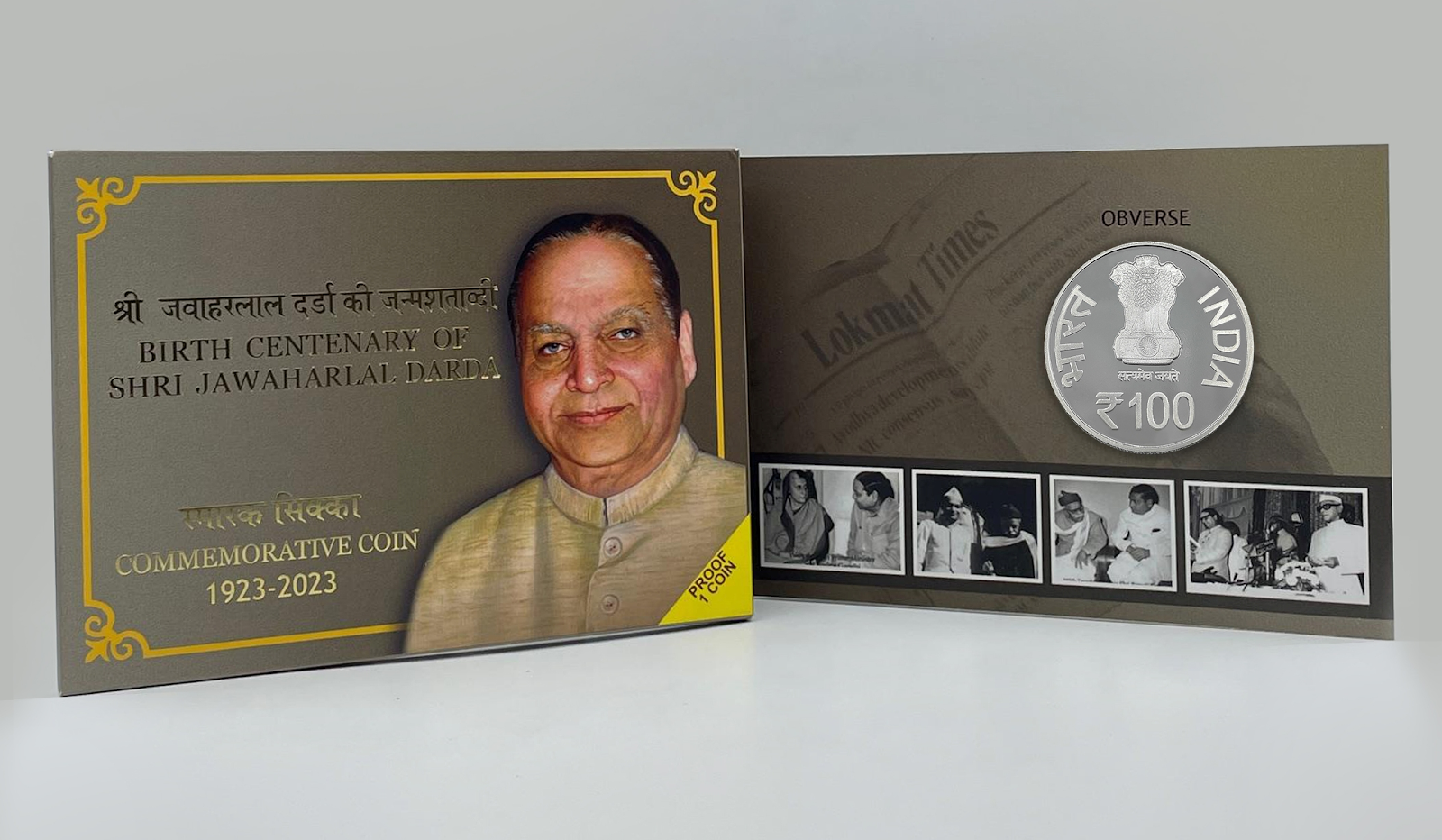Honouring a Freedom Fighter, Journalist, and Nation Builder
To commemorate the birth centenary of Shri Jawaharlal Amolakchand Darda (1923–1997), the Government of India has released a Rs. 100 Proof commemorative coin, presented in a premium folder packing, now available for ₹4,458. This coin is a fitting tribute to a man who dedicated his entire life to the nation, first as a freedom fighter, then as a reformist journalist, and finally as a visionary political leader.
🧭 A Life Steeped in Service and Sacrifice
Shri Darda was born in the village of Babhulgaon, Yavatmal district, Maharashtra. From a very young age, he was drawn to the ideals of Mahatma Gandhi, embracing the path of non-violence and social justice. At just 17 years old, he joined the freedom struggle, participating in the Individual Satyagraha and later in the Quit India Movement. For his role in the battle, he was imprisoned for 1 year and 9 months in Jabalpur Jail.
His spirit of service extended beyond the freedom movement. Shri Darda took an active part in Acharya Vinoba Bhave’s Bhoodan Movement and even aligned himself with Subhas Chandra Bose’s Azad Hind Sena, showcasing his commitment to multiple freedom ideologies.
📰 Journalism with a Nationalist Soul
Post-independence, Shri Darda ventured into journalism with a mission to foster nationalism and social reform. He began by publishing Nave Jag, a weekly paper in Yavatmal. In 1952, he launched Lokmat, which grew to become one of Maharashtra’s most influential media platforms.
Lokmat eventually expanded into:
-
Lokmat Samachar (Hindi)
-
Lokmat Times (English)
The name “Lokmat” was originally coined by Lokmanya Bal Gangadhar Tilak in 1918, adding historical depth to the publication.
🏛️ Public Service and Leadership
A veteran Congress leader, Shri Darda held key cabinet positions in the Maharashtra Government for over two decades, managing crucial portfolios such as:
-
Industry
-
Energy
-
Urban Development
-
Housing
-
Irrigation
-
Health
-
Food & Civil Supplies
-
Sports & Youth Affairs
He was instrumental in transforming Vidarbha and other regions of Maharashtra through:
-
Rural housing schemes
-
Establishing MIDC (Maharashtra Industrial Development Corporation)
-
Founding Vidya Prasarak Mandal for higher and technical education
🏅 Recognition & Legacy
In 2013, Shri Darda was posthumously awarded the “Lifetime Achievement Award” at the House of Commons, United Kingdom, for his contributions to India's freedom and development. A strong independent thinker, he remained committed to Gandhian ideals, social upliftment, and nation-building until his passing on November 25, 1997.
🪙 Coin Details: A Tribute in Silver
This commemorative coin is not just a collectible—it’s a symbol of Shri Darda’s undying legacy.
Coin Specifications:
-
Denomination: ₹100
-
Shape: Circular
-
Diameter: 44 mm
-
Serrations: 200
-
Weight: 35.00 g
-
Metal Composition (Quaternary Alloy):
-
Silver – 50%
-
Copper – 40%
-
Nickel – 5%
-
Zinc – 5%
-
-
Finish: Proof Quality
-
Packaging: Folder (Official Mint Pack)
-
Price: ₹4,458
🎯 Final Thoughts
The Birth Centenary Commemorative Coin of Shri Jawaharlal Darda is a beautiful blend of numismatic artistry and historical reverence. Whether you're a coin collector, a history enthusiast, or someone who values India’s struggle for freedom, this coin is a timeless piece of legacy you’ll be proud to own.
📦 Available now in limited quantity. DM or comment below to reserve your piece of history.











.jpeg)
%20UNC%20@%205500.jpeg)





